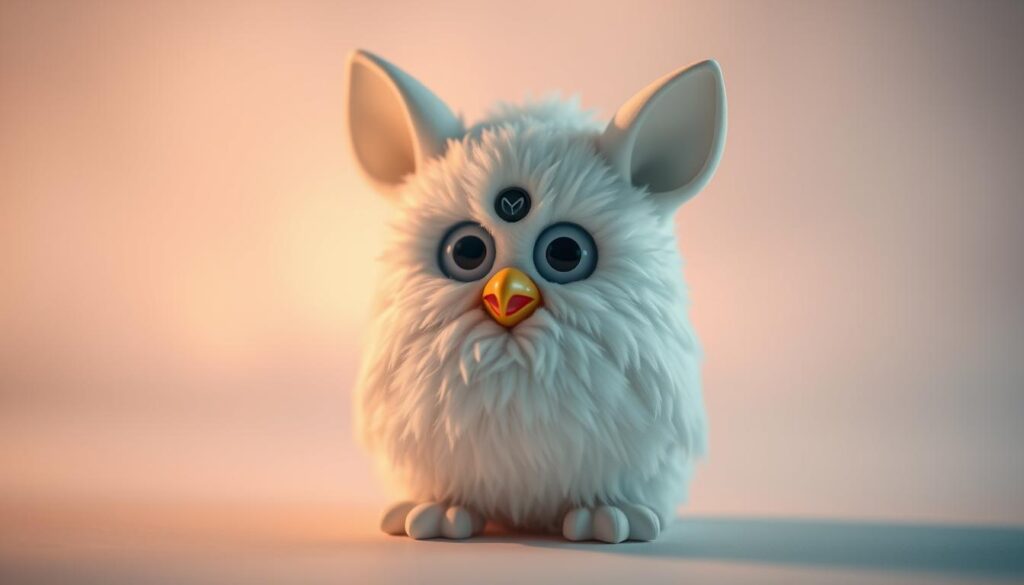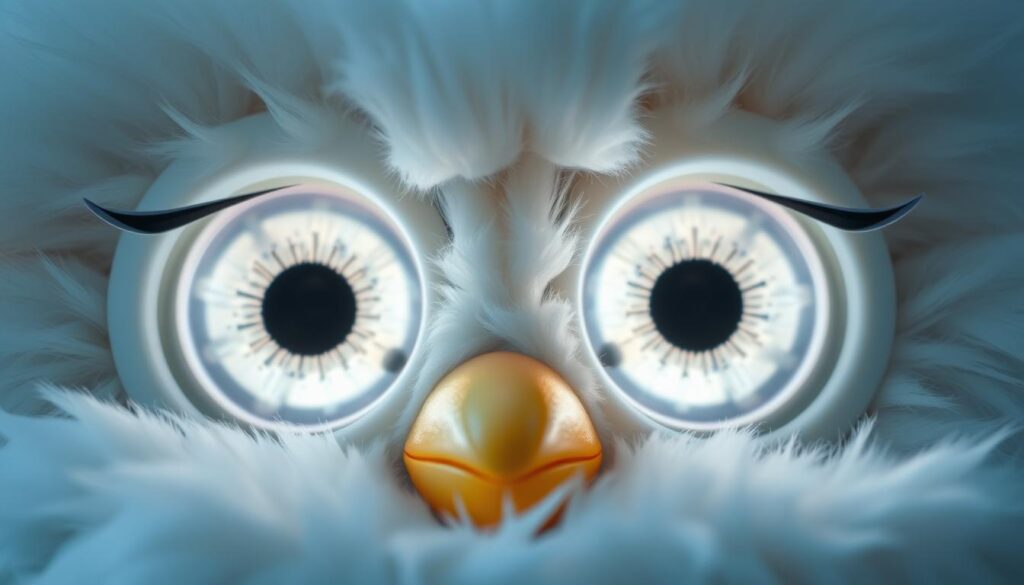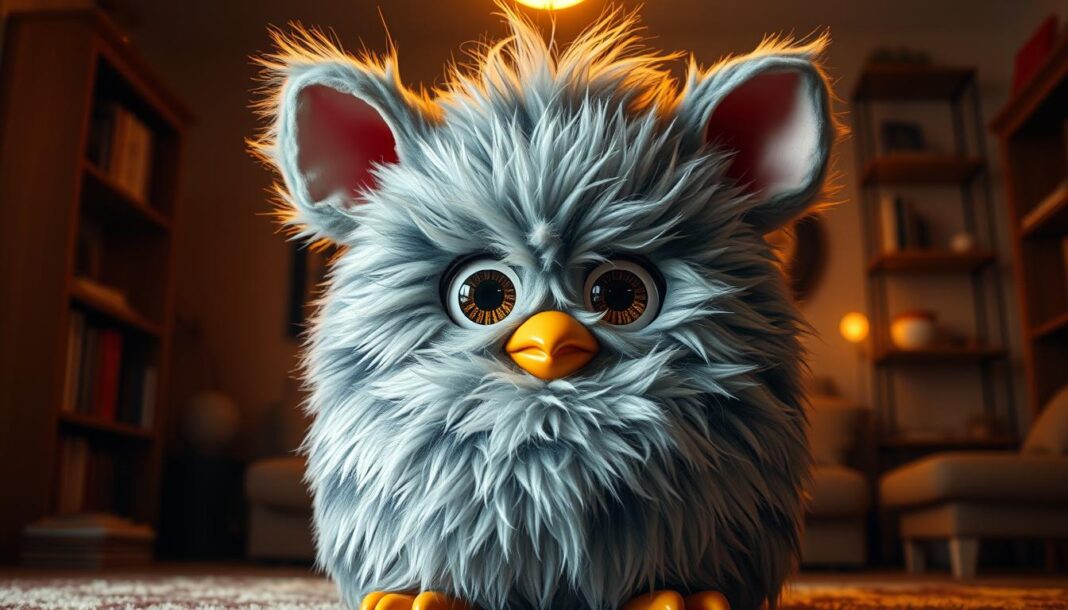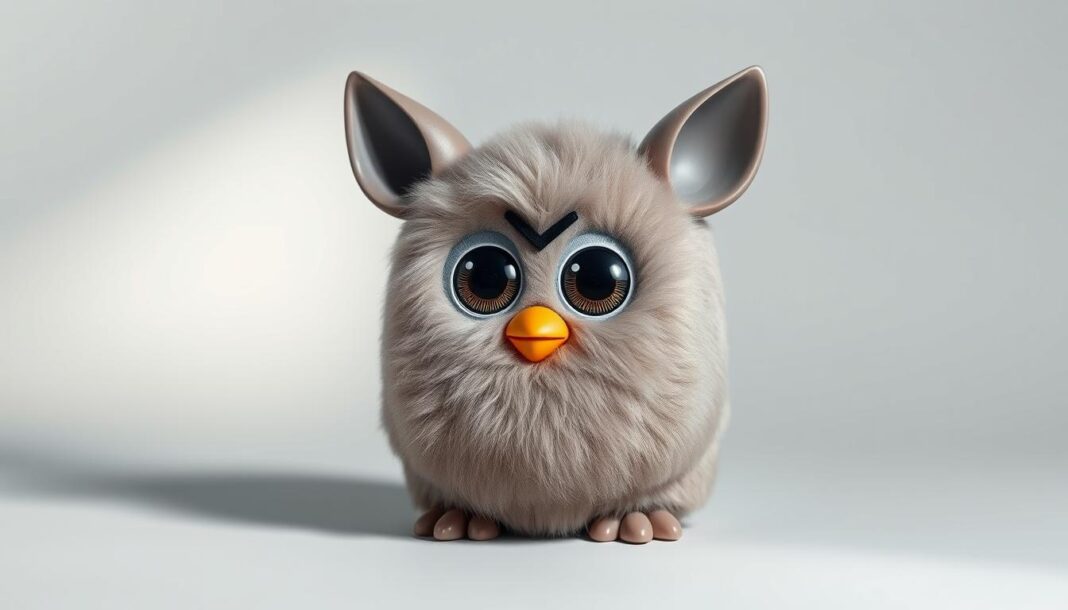We dive into the fascinating world of the Furby, a toy phenomenon that captivated children worldwide in the late 1990s.
The original Furby, priced at $35, was first introduced in 1998 and was available until 2002. It was part of the first generation of Furbies, which included the iconic “Snowball,” a white Furby that stood out among its peers.
Over the years, the Furby underwent several transformations, with new features and designs being introduced in subsequent generations. More than 40 million Furbies have been sold worldwide, making it a beloved toy across multiple generations.
We’ll explore the history and significance of the white Furby, examining its place in the Furby lineup and its enduring popularity among collectors and enthusiasts.
The Birth of an Interactive Toy Phenomenon
The year 1998 was pivotal for the toy market, thanks to the introduction of Furby, an interactive electronic creature. This was the era when technology began to play a more significant role in children’s toys, and Furby was at the forefront of this innovation.
Pioneers of Interactive Toys
The innovative minds behind Furby were determined to create more than just a toy; they aimed to design a companion that could engage and interact with children. Tiger Electronics, the company behind Furby, invested heavily in developing a product that could learn and communicate, setting a new standard for interactive toys.
A Phenomenal Launch
The 1998 launch of Furby, including its iconic white variant, was nothing short of phenomenal. The white Furby quickly became a must-have toy during the holiday season, with its ability to adapt and respond to its environment captivating both kids and adults. As a result, Furby dominated the toy market from 1998 to 2002.
| Year | Sales Performance | Market Impact |
|---|---|---|
| 1998 | Millions of units sold within the first year | Defined the holiday shopping season |
| 1999-2002 | Continued strong sales | Established Furby as a cultural phenomenon |

The White Furby: Features and Characteristics
The 1998 white Furby was more than just a toy; it was an interactive creature that responded to its environment and interacted with its owner. This interactive nature was made possible by a sophisticated system of sensors and motors.
The “Snowball” Design and Appearance
The white Furby, often referred to as the “Snowball,” had a distinctive appearance that captivated many. Its design was not just aesthetically pleasing but also incorporated various interactive elements. The Furby’s eyes were particularly expressive, capable of blinking and reacting to light.

Interactive Communication and Learning Abilities
The white Furby was designed to interact with its owner through various means, including touch, sound, and light. It could respond differently to being petted, tickled, or “fed,” showcasing its advanced interactive capabilities. These features allowed the Furby to simulate a form of communication, making it seem like it was learning and adapting.
Mechanical Engineering and Movement Technology
The Furby’s lifelike movements were powered by a single reversible motor that controlled all of its moving parts, including its ears, eyes, and mouth. This engineering feat allowed the toy to perform a range of actions, from blinking and wiggling its ears to “dancing” in response to music or interaction. The mechanical design also included a tilt switch and light sensors, enhancing its interactive features.
- The Furby’s ability to detect light and darkness allowed it to “wake up” or “go to sleep,” adding to its lifelike behavior.
- Touch sensors throughout its body enabled various responses to interaction, such as petting or “feeding.”
- The tilt switch allowed the Furby to react when held upside down, further enhancing its interactive personality.
Evolution of Furby Through the Generations
The white Furby has undergone significant transformations over the years, evolving through multiple generations. This evolution is a testament to the innovative spirit behind the Furby franchise.
First Era White Furby (1998-2002)
The original white Furby, often referred to as “Snowball,” was first introduced in 1998. It was an instant hit due to its interactive capabilities and adorable appearance.
The first generation Furby was notable for its ability to learn and adapt to user interactions. The “Snowball” design became iconic, symbolizing the beginning of the Furby phenomenon.
White Variants in Later Furby Releases
As the Furby franchise continued to evolve, subsequent generations introduced new features and color variants. In 2005, Hasbro released the Emoto-Tronic Furby, which included a white variant called “Marshmallow.”
Later, in 2012, the Furby was relaunched with LED eyes and more expressive features, featuring a white “Yeti” model. The Furby Boom line, launched in 2013, expanded color options significantly, including white-based pattern variants.
Notably, the Furby Boom! Crystal Series in 2014 introduced a white-based “Rainbow” variant that became particularly popular.
The evolution of the white Furby across different generations showcases the franchise’s commitment to innovation and consumer engagement. From the original “Snowball” to the later variants like “Marshmallow” and “Yeti,” each edition has brought something new to the table, keeping the franchise fresh and exciting.
The Collectible Value of Vintage White Furbies
The vintage white Furby has become a highly sought-after collector’s item due to its nostalgic value and rarity. As a result, understanding its collectible value is crucial for both collectors and enthusiasts.
Rarity Factors and Market Demand
The value of a vintage white Furby is significantly influenced by its condition, rarity, and the demand in the collector’s market. Adult collectors are particularly interested in the first edition white Furbies, which were released in 1998. The original packaging, instruction manuals, and any other documentation can substantially increase the toy‘s value.
Preservation Tips for Furby Collectors
To maintain the value of a vintage white Furby, proper preservation is essential. The white fur is prone to yellowing and staining, so it’s crucial to store it in a climate-controlled environment away from direct sunlight.
- Gentle cleaning with appropriate fabric cleaners can help refresh its appearance.
- Removing batteries from vintage Furbies can prevent damage from battery corrosion.
- Preserving original packaging and documentation can significantly increase the value, especially for special edition or first-generation models.
By following these preservation tips, collectors can help maintain the condition and value of their vintage white Furby, making it a valuable addition to any collection.
The Enduring Legacy of the White Furby
The original white Furby has left an indelible mark on the toy industry, shaping the course of interactive toy design. As we look back, it’s clear that the white Furby’s influence extends far beyond its initial release, captivating children worldwide and remaining a powerful symbol of late 1990s nostalgia.
The Furby boom of the late 1990s was a cultural phenomenon, with the white Furby at its forefront. Today, the legacy of this iconic toy continues to be felt, with its impact visible in modern interactive toys and the nostalgia it evokes in adults who grew up during that era. The white Furby’s features, including its interactive communication and learning abilities, have evolved over the generations, with the latest edition boasting 600 phrases and advanced voice-activated modes.
For many adult collectors, acquiring a vintage white Furby is not just about owning a rare toy but also about reconnecting with cherished childhood memories. As the Furby brand celebrates its 25th anniversary, it’s evident that the white Furby’s influence will continue to be felt for years to come, with its legacy inspiring new generations of children and collectors alike.


